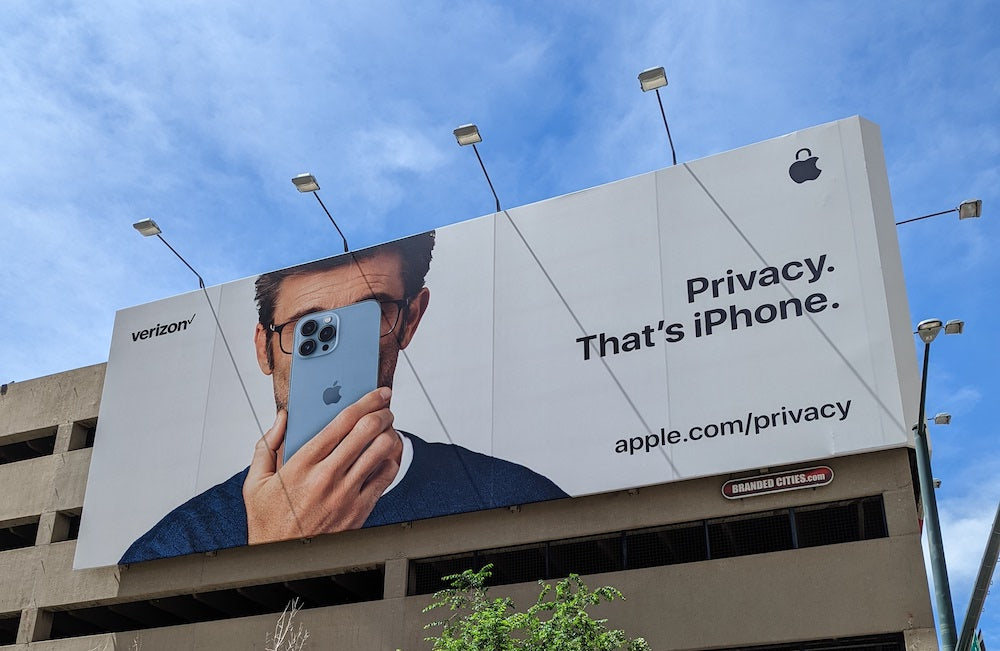In the months following the release of Apple’s iOS 14.5 feature update, we began to receive an influx of inbound inquiries from prospective brand partners to the effect of:
“Our paid social campaigns have been tanking since May and we can’t seem to get them to rebound.”
It was clear what was going on. The brand, the agency, or both had underestimated the impact of iOS 14.5 and there was not a clear plan to exit this crater they found themselves in. We knew because our team was experiencing the same thing in real-time. What alternative strategies can we employ that are less reliant on Facebook Ads for generating impressions and traffic? What role does Facebook play in our overall media mix with limited targeting options and shifts in reporting?
The Optimistic Underestimate
Leading up to the April 2021 feature release, we shared with our brand partners (maybe even overshared) the details around Apple’s upcoming privacy changes and the potential impact they would have on social media ad targeting and attribution. In hindsight, it’s unclear if anyone knew the ripple effects this change would have across the entire digital marketing ecosystem. One of the surveys conducted prior to the iOS14.5 launch predicted that just shy of 40% of users would opt-in to tracking when prompted. Facebook and other social media ad platforms like Twitter, Pinterest, TikTok, and Snapchat rely on “cross-domain” to gather user behavior data and attribute conversions that happen outside of the social media platform’s “walled garden”.
This cross-domain data is a virtual gold mine for ad platforms and was a key factor behind the rocketship revenue growth of Facebook’s ad platform in particular. Fast forward to April of 2022, and 82% of all iOS users in the US have opted out of app tracking, with another 5% restricted from being tracked. Globally, the numbers are slightly lower at 75% opted out and 4% restricted. As if in solidarity with declines in advertiser performance, Facebook’s stock fell by 26% ($250B) after its subsequent quarterly earnings report.

A Data-Starved Machine
So how exactly did the privacy changes associated with iOS 14.5 cause paid social campaign performance to tank across industries? Simply put, with tracking restrictions came smaller data sets. As iOS users opted out of cross-domain tracking, audiences shrunk, particularly remarketing audiences which tend to be the most profitable. Social media ad platforms rely on data-hungry AI algorithms to arrive at successful outcomes. When the user data pipelines slowed down, ads took take longer to gather statistically significant data and advertisers had smaller pools of qualified users in the form of audiences to target. In general, the larger the advertiser and the more mass-market their target audience, the less they felt the negative impact on price and performance. In contrast, brands with niche audiences or smaller budgets saw their campaigns ramp down gradually all while ad costs increased.
A Blow to Customer Acquisition Economics
If iOS 14.5 launched prior to COVID we might have expected downward pressure on ad prices from advertisers shifting their budgets elsewhere. Instead, COVID sparked a boom in direct-to-consumer eCommerce sales that not only increased the size of the advertiser base but resulted in increased investment from existing players. The resulting increased costs and in some cases, contracting supply, was a disaster for customer acquisition economics.

Across Foghorn’s portfolio of Outdoor and Active Lifestyle brand partners, we saw CPMs (cost per thousand impressions) increase by 27% on Facebook/Instagram and a whopping 46% on Google. In many cases, increased consumer demand bolstered conversion rates, but not by enough to make up for the price increases. With most of our brand partners operating in niche areas, they saw disproportionately higher CPM increases than brands with a mass market customer base like with CPG or auto.

The Death of Hyper-Segmentation
As our Facebook rep put it, “the days of advertisers manually hacking their way to ad success are no more.” Facebook’s frighteningly specific target options were one of the primary drivers behind the mass migration of ad dollars away from traditional media and programmatic to the Facebook ad platform. Over time, it has become clear that increasingly layered targeting (a.k.a. “hyper-segmenting”) does not necessarily mean better campaign performance. In fact, the ability to target ads on a granular level has a tendency to create a false sense of security and efficiency among advertisers that mask the uncomfortable reality that ads might not be reaching the right audiences. Hyper-segmenting might get you outstanding interaction rates, but at what cost and what scale?
As recently as 2019, brands could hyper-segment and spend their way to exponential customer acquisition growth through a single advertising channel. A dream come true for any ad platform or DTC entrepreneur for that matter. This class of brands built on Facebook or Instagram experienced rapid growth without having to invest in traditional brand building. While doing so, they became intrinsically linked to Facebook, relying on aggregated third-party data and ad targeting algorithms to survive.
Today, successful DTC brands are re-focusing on a more holistic marketing mix with owned, 1st party data at the forefront. The channels we’re seeing trends of increased investment are:
- Email: Newsletters, automated series, list growth campaigns
- SMS: Opt-in exclusives for high-value and returning customers
- Organic Search: Non-brand, question queries, and other long-tail terms, all landing on rich-content collections pages
- Affiliate: Blogs, review sites, and social media influencers
- PR: Paid and earned placements that generate referral traffic and permalinks
Your First-Party Data Strategy
It’s more important than ever to have a clear first-party data strategy. Brands and content publishers alike are doubling down on their first-party data acquisition efforts by incorporating features like:
- Keeping content behind a paywall, login, or email capture requirement
- Adding subscription models for premium content or functionality
- Running promotions or giveaways that require an email address or social follow
- Default login Integrations with juggernaut web ecosystems like Google, Facebook, Apple, MSFT, etc.
An emerging trend we’re seeing with first-party data is audience generation by email platforms like Klaviyo and payment platforms like Shopify, Affirm, Klarna, and Afterpay, who know plenty about consumer buying habits. These are filling a much-needed gap that Meta and other social platforms are no longer able to provide. Audiences are often small (in the thousands), but can be used to create look-a-like audiences based on these to expand them into the millions. Although these audiences have not been available for long, Foghorn has seen promising results with the test campaigns we’ve run to date.
What You Need to Know Now
So, what still works post-iOS 14.5, and what can brands be doing to prepare for a cookie-less future? This is what you need to know now:
- Develop a first-party data strategy, taking into account all of your brand’s digital touchpoints (social, SEM, email, web, affiliate, PR, blog, etc.)
- Diversify ad spend and overall digital marketing efforts. No one, or two, channels should make or break your online business.
- Rethink your KPIs based on what data you can rely on today. Stop comparing everything to 2021, or even worse, 2020. Benchmarking against COVID years is a waste of time and has the potential to lead you astray. Focus on what’s working now and make sure to diversify rather than spend time and resources trying to get back to a place that no longer exists.
If you’re looking for help developing your first-party strategy, or finding ways to diversify your paid media mix, drop us a line.






Share:
Best Strategies for How to Increase Your Online Average Order Value
Email Best Practices in 2023